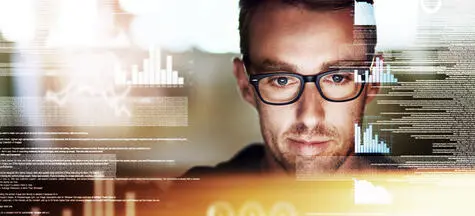Over the past two decades, we have witnessed a fundamental shift from country-specific economies to a global business arena.
The digital age has brought with it new shopping experiences that allow goods to be purchased from sellers all around the world and delivered directly to their customer’s door.
It marks an exciting time for businesses, placing international markets at their fingertips. But what impact has it had on the way businesses are operated, and how have tax departments navigated subsequent changes to the likes of financial and tax reporting, IT infrastructure, and indirect tax legislation?
In the past, before this global economy had emerged and digital became our second nature, tax teams were devoted to country (or region) specific tax compliance and reporting. It was a straightforward process: each jurisdiction had its own tax report, which was monitored for errors based on local regulations, before being submitted to the relevant tax authorities.
However, the arrival (and acceleration) of cross-border e-commerce has rendered this practically impossible. The move to destination-based tax rules has pushed businesses toward real-time indirect tax calculation, meaning rules and rates are now applied at the point of sale to ensure proper invoicing and a “no-surprises” customer experience. Additionally, the regulatory landscape has become increasingly digital, too, with (near) real-time tax reporting and e-invoicing on the rise, and soon to be mandated across many EU countries.
Journey to centralisation
IT infrastructures, such as ERP systems, traditionally were also deployed by country or region, but this meant multinationals could have over 200 ERP instances globally, depending on in how many countries they had operations.
This decentralised approach is no longer compatible with the global operations and supply chains businesses currently have. Because of this IT needed to reduce the number and extend the scope of ERP instances so that they became global. This also provided tax teams (including tax technologists) and CFOs a single point of truth for the assessment of their financial and tax positions at any one time. With global tax-aware ERP systems, businesses can standardise their processes and data, automate their indirect tax calculations, and harmonise financial and tax reporting.
Our recent ‘Compliance’s Complexity’ report, gathered insights from 580 individuals with responsibility for indirect tax compliance within their organisation. The results showed that almost half (47%) of companies now have these centralised processes in place. The impact of this new, digital age cannot be denied. 34% said changes to software are driving their company’s tax compliance strategy and 22% said specialist tax technology would be the biggest alleviator to their current challenges.
Impact of centralised systems
While system consolidation has helped to solve many problems for companies, it has not come without its challenges. It highlights errors and data quality issues that were previously hard to spot in decentralised frameworks.
That said, this has also led to centralised master data management and motivated businesses to do better when it comes to their compliance. Tax teams have looked to new technology to help drive efficiencies and improve their organisations’ tax compliance.
While the implementation of tax technology sounds like a task best suited to both IT and tax departments, in reality, these two have struggled to work together in this new, system-led approach. Both sides have different technical backgrounds and have failed to fully grasp each other’s challenges. As a result, tax teams have had to step up and hone not only their financial knowledge, but also their IT skills, in order to address today’s global tax challenges. This has given rise to a new role with a new set of skills within tax departments. That of the tax technologist.
Presenting the tax technologist
Tax technologists have become the bridge between the tax and tech sides of modern-day businesses. They can be a tax team member upskilling IT knowledge, or an IT team member learning all they can about tax. The principle is the same: they are the individual within the business that understands both worlds.
The tax technologist role is one that carries great responsibility as they impact compliance, and they have a big say in optimising the efficiency of processes via automation by leveraging tax technology and getting involved in larger upgrade projects like ERP migration or integration activities. Their understanding of both tax compliance and the technology that supports it makes the role vital in the adoption of new and innovative solutions.
Their challenges include everything from navigating entry into new markets to managing cloud migrations, all while maintaining high standards of data security and privacy. But with our research showing that 78% of tax decision-makers today believe internal skills and talent are most important to achieving indirect tax compliance (and 36% saying skills are the biggest gap in their compliance strategy) there is clearly a need for more skills and training in this space moving forward.
There is no going back to a pre-digital world of trade. That’s why tax technologists are establishing themselves as an essential source of support within modern day businesses, making sure the right tax technology is in place to lead the business towards efficient tax compliance and healthy, sustainable growth.
As businesses continue to embrace digital transformation, the role of tax technology and the tax technologist is becoming increasingly vital. To learn more about how technology is reshaping tax administration and driving efficiency, read our Digital tax transformation: how tech is changing tax article.
Download your copy of our latest report, Compliance Complexity, to learn more and explore Vertex's latest findings on global indirect tax compliance.


